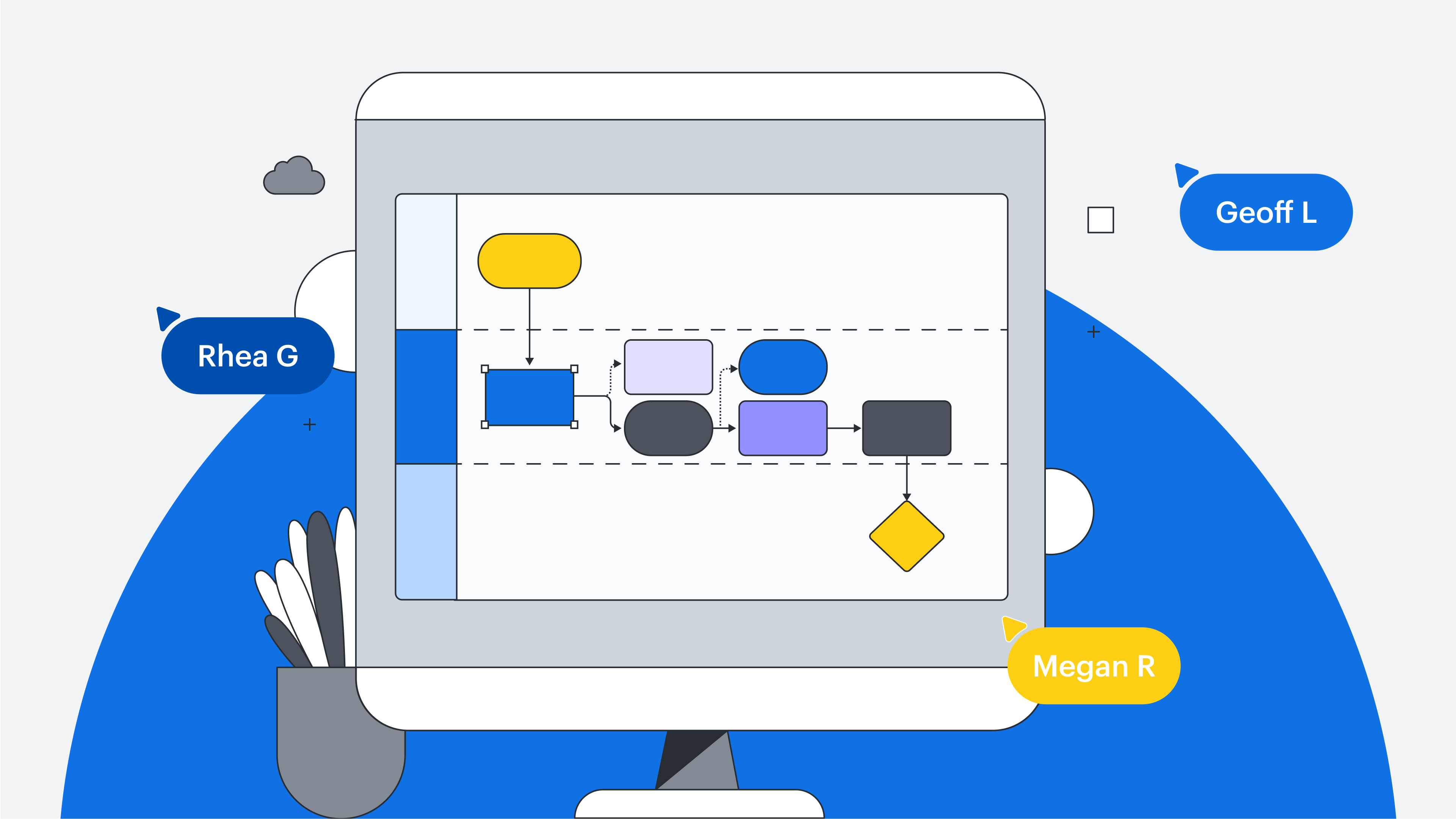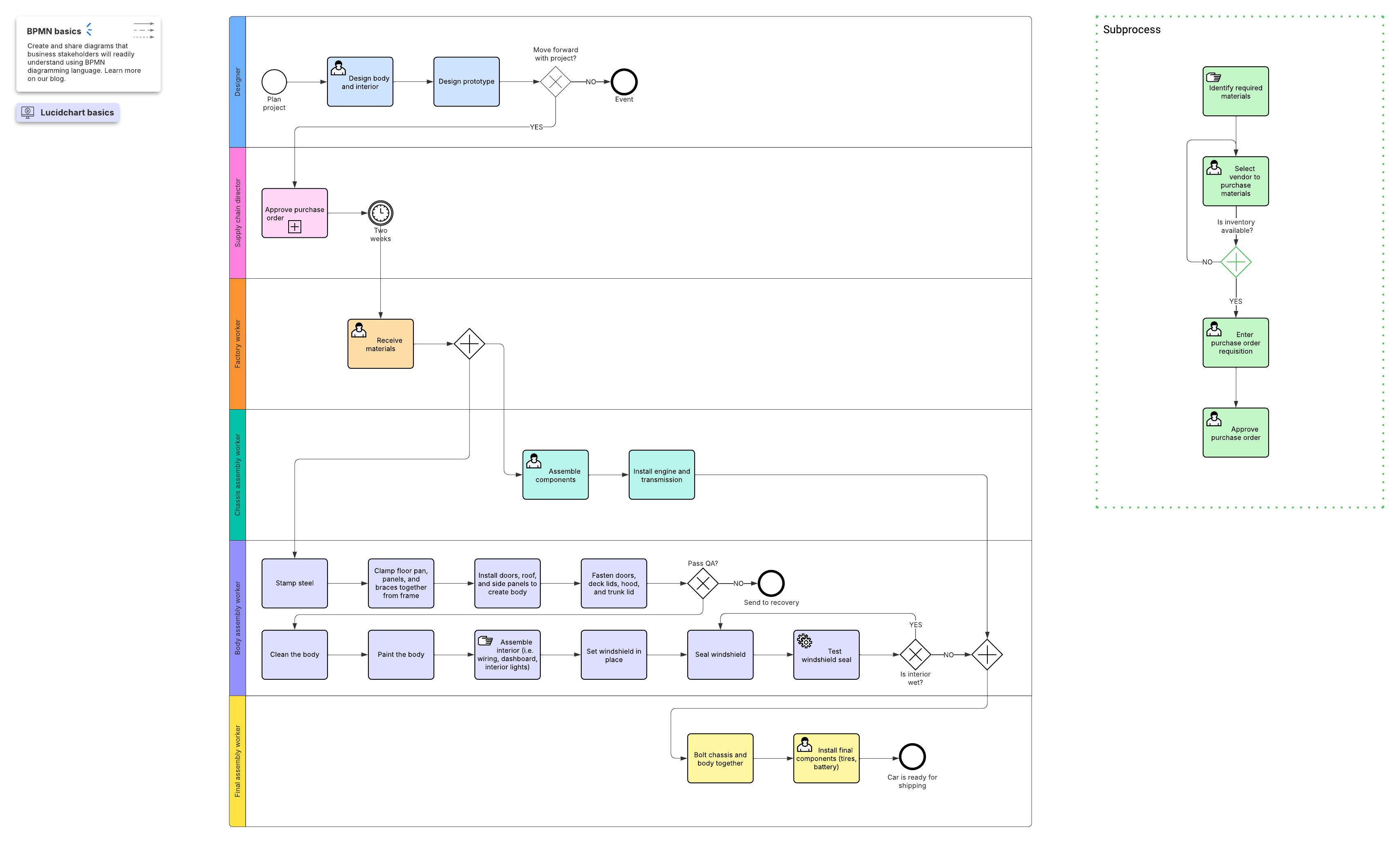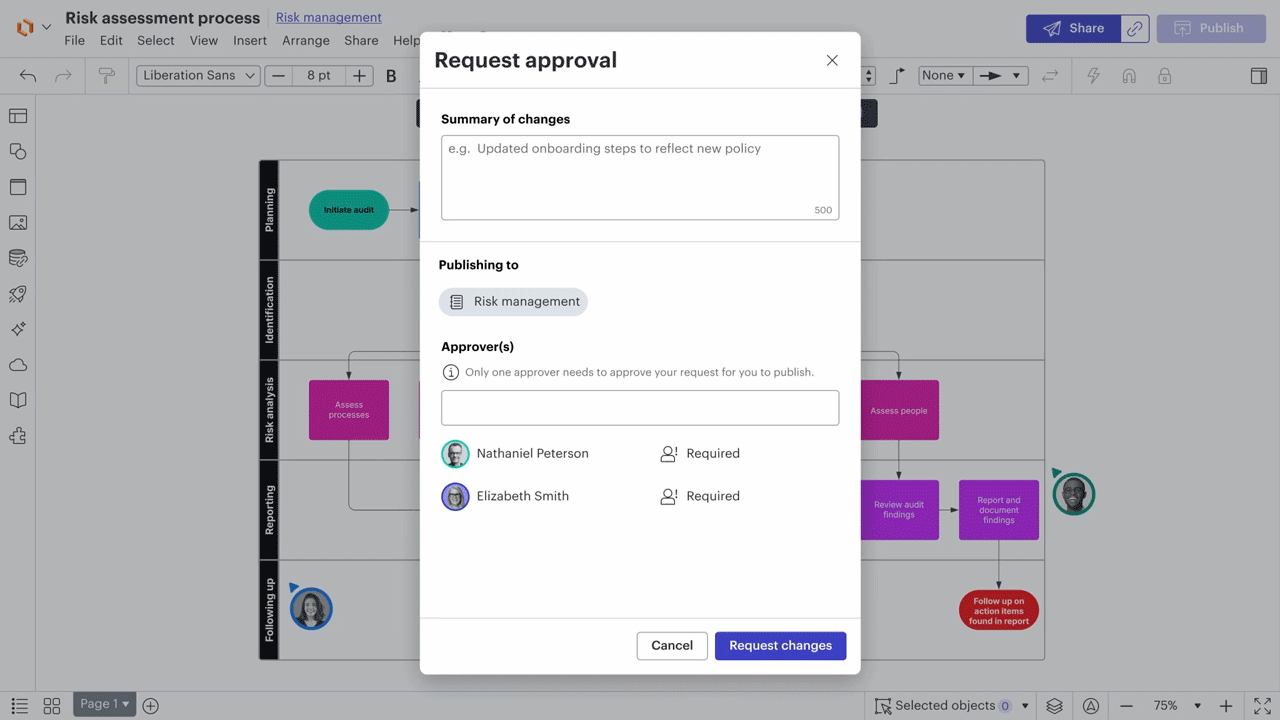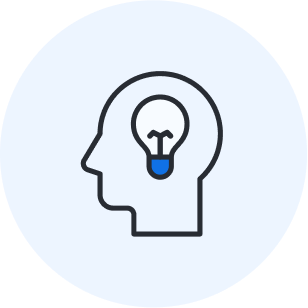
How to implement new processes in the workplace
Reading time: about 7 min
Change is inevitable and often necessary, but that doesn’t mean it’s easy—especially for your employees. When processes are updated or reworked, you may face pushback, confusion, and frustration from your team.
Even if you've put a lot of work into analyzing and improving your processes, all that work is for naught if people don't adopt and follow the new standards. That’s why it’s important to have a plan in place to implement new processes, ensure these processes are easily accessible, and get employees on board from the start.
Steps for process implementation in the workplace
Use the following tips on how to improve a process at work and communicate it to employees so everyone follows it the intended way.
1. Explain the need for the change
Clear communication is essential for a smooth transition to new processes at work. As you introduce new processes, explain why the change was necessary, what goals you hope to achieve with these changes, and what benefits these new processes will have for employees.
When you explain the why behind a decision—especially a process change that significantly impacts employees’ day-to-day workflows—employees are more likely to understand the need for the change and get behind it.
Emphasize the value these changes provide to your organization or team and connect them to your overarching company goals. This needed context can make all the difference in adoption and implementation.
2. Get buy-in from leadership and key employees
If you want your team to adopt new processes, those changes should be sponsored by leadership and, when possible, modeled by one or two key employees. When change is championed and prioritized from the top and reinforced on the ground by management and key employees, other individuals will be more likely to follow.
Appoint an enthusiastic employee to be your process champion. They will be your on-the-ground example to the rest of your team of what the process can look like and how it can benefit them. Embracing experimentation and adaptation, combined with a strong support system of training and mentorship, will help everyone get on board early.
With this leadership approach, new work processes are more collaborative, allowing teams the flexibility to figure out the best way to apply a process in their situation. Giving people autonomy and being more intentional about adapting to change can make implementing new processes more successful.
3. Adapt training according to employee needs
Assess your organization’s current state in terms of its people, processes, and resources. Which employees will be executing the new process, what are their current skills and knowledge, and what tools are available to support this transition?
In Lucid, you can visualize both your current state and your ideal future state with flowcharts. By clearly defining the steps in your current process, you can analyze the process and identify areas of improvement. A future state flowchart shows what your new process will look like once those changes are implemented.

Use these visuals and other process maps and flowcharts to introduce the changes you are making and clarify department, team, and individual roles and accountabilities within the workflow.
Then, you can design training that addresses your employees’ needs and fills gaps in skillsets or knowledge, and you can provide the tools and resources necessary for their success. Visuals, for example, are a great way to communicate complex information quickly and effectively and can be a powerful training tool.
You can train and upskill your workforce in various ways. Consider including the following strategies as part of your training program:
-
Implement a tutoring or mentoring program.
-
Establish peer-to-peer accountability systems.
-
Develop workshops, presentations, or seminars.
For example, if your team is adopting new software to automate part of their workflow, you will need to make sure they have the knowledge and training to navigate the software itself and integrate it into their workflow. They will also need the right technical support to troubleshoot any issues.
If they don’t have these resources, they are less likely to adopt the new software in the first place and may implement workarounds when issues arise.
4. Document your new processes
Documenting your processes also helps prevent miscommunication and acts as an essential reference for managers and employees alike.
Lucid makes it easy to organize process documentation, creating a single source of truth across teams. Link data and documents directly to your process map so all the information is accessible in one central location. Tag team members to notify them of specific areas in the process that need attention, and easily share process documentation through your favorite communication channels.

For example, you can add process documentation to your team agreement. A team agreement, or team charter, establishes your team’s way of working and brings everyone together to agree on group norms.
Adding a new process to your team charter will help you implement the process across the board and provide resources if people have questions. After all, a recent survey commissioned by Lucid found that a lack of documentation is the number one barrier to following established processes.
5. Share documentation where it makes the most sense for your team
Having your processes documented is important, but if your team doesn’t have easy access to that documentation, they will be less likely to refer to it and keep the information top of mind.
If you are using a work acceleration platform like Lucid, you can easily facilitate organization-wide sharing and provide real-time access to documentation. You can also make it easier to scale processes and drive consistency, so teams don’t have to recreate processes.
With Lucid’s Process Accelerator, share your processes where and when it makes the most sense for your team. Facilitate feedback easily and check in regularly with your colleagues to see what is working and what adjustments may be necessary. By using Lucid to map and share processes, you can define standards and improve consistency throughout your organization.

6. Let them fail
No one wants to fail. And this can be especially true in a work environment where performance plays a big role in an employee’s success at an organization. But that fear of failure can hold your employees back from embracing changes and tackling new processes. In other words, instead of failing by trying, they’ll avoid trying altogether.
The solution is to make it safe for your employees to fail. A safe-to-fail environment is key to building high-performing teams and establishing an innovation culture. When you introduce a new process, acknowledge that there will be a learning curve, and reassure your team that mistakes are expected. Give them time to train, practice, fail, and try again until they become comfortable and confident with the new process.
When people feel safe enough to fail, they will feel secure enough to try new things and less threatened by change.
7. Expect and encourage continuous work process improvement
You should expect your new work processes to eventually change again and again as your business evolves—after all, that’s the only way to improve and move forward. But if your employees aren’t kept in the loop, continuous change could be frustrating or defeating, leading to lower morale and decreased productivity.
As you implement changes, let your employees know that you plan to continuously improve these processes. Invite them to provide feedback or ideas regularly. When employees know what to expect and feel like they’re part of the solution, they will be more likely to adopt new processes and participate in process improvement. By constantly monitoring and adjusting your processes, you can truly boost efficiency for your organization.
Using Lucid for process implementation
Developing new processes and convincing people to change isn’t easy, but it’s worth it. Continually improving your operations and clarifying new business processes is essential if you want to remain competitive. With careful preparation, strategic implementation, and standardized documentation, you can successfully train and onboard employees to new processes over and over again.
Thanks to intelligent features like automation, data-linking, and more, Lucid helps companies streamline their new work processes and visualize changes in real time. Learn more about Lucid’s features and see how our platform can help you improve your work process documentation and implementation to enhance efficiency across the board.

8 ways Lucid helps improve business process documentation
Check out how Lucid can help you boost efficiency and alignment by streamlining process documentation.
Learn moreAbout Lucid
Lucid Software is the leader in visual collaboration and work acceleration, helping teams see and build the future by turning ideas into reality. Its products include the Lucid Visual Collaboration Suite (Lucidchart and Lucidspark) and airfocus. The Lucid Visual Collaboration Suite, combined with powerful accelerators for business agility, cloud, and process transformation, empowers organizations to streamline work, foster alignment, and drive business transformation at scale. airfocus, an AI-powered product management and roadmapping platform, extends these capabilities by helping teams prioritize work, define product strategy, and align execution with business goals. The most used work acceleration platform by the Fortune 500, Lucid's solutions are trusted by more than 100 million users across enterprises worldwide, including Google, GE, and NBC Universal. Lucid partners with leaders such as Google, Atlassian, and Microsoft, and has received numerous awards for its products, growth, and workplace culture.
Related articles
How 7 Lucid employees use Lucid for process improvement
Learn from seven Lucidites how they use Lucid for process improvement.
A step-by-step guide to business process improvement
How do you go beyond the methodologies and create real change? It’s time to learn the process of process improvement.
8 Lucid features to improve business process documentation
Improve process documentation to achieve greater alignment within your organization using these Lucid features.
How to speed up stakeholder approval for processes
If you’re looking to speed up the stakeholder approval process for your team or organization, here are some tips!
